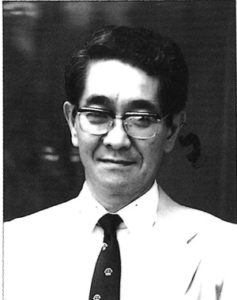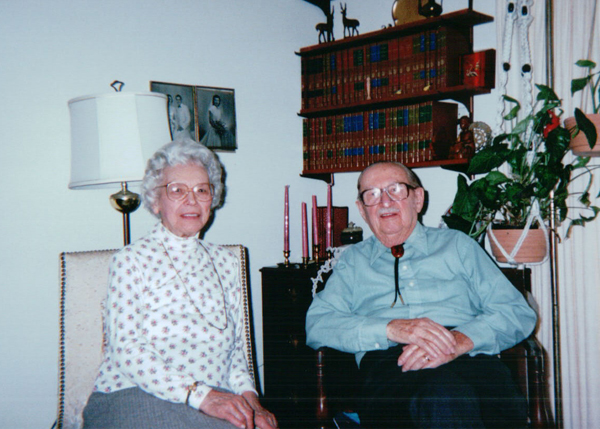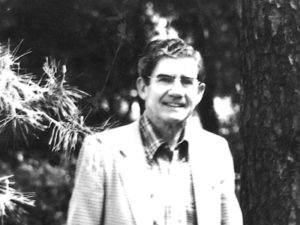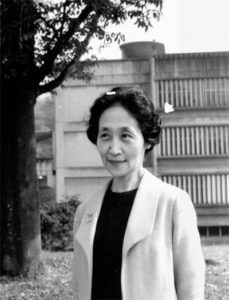Alumni Stories No. 19 – Tim Winant Part 3
This is part three of alum Tim Winant’s story. Tim studied abroad at ICU as an “OYR” (“One Year Regular” or exchange student) in 1962 and as a special student in 1965. In the 1980s, he was on the Board of JICUF, and returned to ICU in 1990 to serve as the Assistant to the President and the Dean of International Affairs until 1999. You can read part 1 here and part 2 here.
ICU PEOPLE

It is difficult to think of ICU without thinking of the people who have done so much to make it the university and community that it has become. In my student days there were a number of individuals and couples who made significant impacts on the ICU experience.
The late Reverend Yasuo Furuya, a fixture at ICU for more than forty years, was an omnipresent influence at the university for so long it is hard to think of anyone with a stronger role. He ministered to the campus through the administrations of most of the presidents in ICUs early years, and created the church as a major focus for all. Every student entered ICU through the portal of the ICU Church, and every student graduated under its roof. His personality was unique, his style creative, and his presence reassuring.
Professor of Educational Psychology Maurice E. Troyer was largely responsible for the creation of the ICU curriculum from the earliest days. I was fortunate to get to know him during my time at ICU, and become even more close in later times when he and his wife, Billie, retired near me in Pennsylvania. I used to drive them from their retirement home to New York for JICUF gatherings, and we spent a lot of time together. It helped that I had also lived for two years in Dr. Troyer’s home town in Illinois, where the local hospital had been founded by his father, as was its nursing school. Professor Troyer was a founding father of ICU.


Another important figure from the earliest days was Professor J. Edward Kidder, Jr. (Art and Archaeology). I took his classes during my first time at ICU, and I still have the notebook from his course in Japanese Art. His expertise, observations and humor brought significant knowledge, but also expansive understanding of Japan for all those who were fortunate enough to study with him. And who could ever forget Mrs. Kidder, Cordelia, who was so remarkably different, and no less knowledgeable about Japanese archaeology.
Professor Iwao Ayusawa, whose specialty was labor issues, was a very interesting man as well. There was a further personal connection here, as Professor Ayusawa had spent many years working for the International Labor organization in Switzerland where he worked closely with my grand uncle who was the first American representative, and later the head of the Organization as WWII ravaged the world after 1939. Professor Ayusawa was an astute observer and knowledgeable scholar on the early ICU faculty.
Of course, for non-Japanese students the inimitable Professor of Japanese, Fumiko Koide, was perhaps the most important, and often the most pain producing, of teachers. Her appearance in the classroom on a Friday was guaranteed to leave us traumatized as she arrived, opened the textbook in her hand, and then totally ignored it as she threw questions at students in Japanese with machine gun precision. Woe to any student who was unprepared, or who stumbled over their answer. The pain did not end there, as the weekend after her appearance came with an assignment to keep us busy and on our toes. On one occasion, out of frustration, I completed the required ‘Fairy Tale’ in Japanese, describing an evil ogre (an Oni) that lived in a cave and terrorized innocent non-Japanese every week. The day after I handed it in one of my teachers suggested that I looked ill and should probably take Friday off to get well. The next day another teacher suggested the same thing. Why Friday? I soon discovered why when Koide-sensei arrived, opened her book, and spent the rest of the class shooting questions at me, totally ignoring the other students in the class. I learned my lesson!

Another important figure in the early days of ICU was Tane Takahashi, the first woman to head a university library in Japan. Miss Takahashi created an atmosphere and professionalism in the Library that made it a more important place at ICU than libraries seem to have been in those days at other universities in Japan. Her knowledge and experience always impressed me and influenced my own daily use of the materials available when I was a student.
ICU has always attracted remarkable individuals, as faculty, as staff and as students. Her influence on those of us who have spent parts of our education there has been a hallmark of its success as a university, and an inspiration as we have gone on to contribute in our own ways to the world we live in.
This is part 3 of a four-part series. To read part 4, click here.



